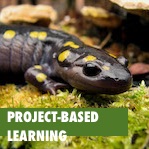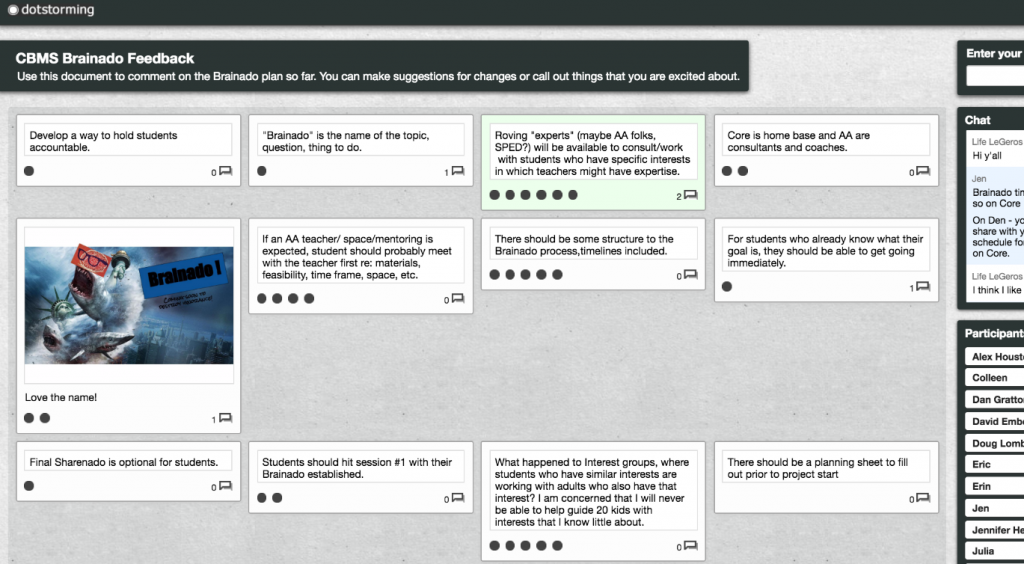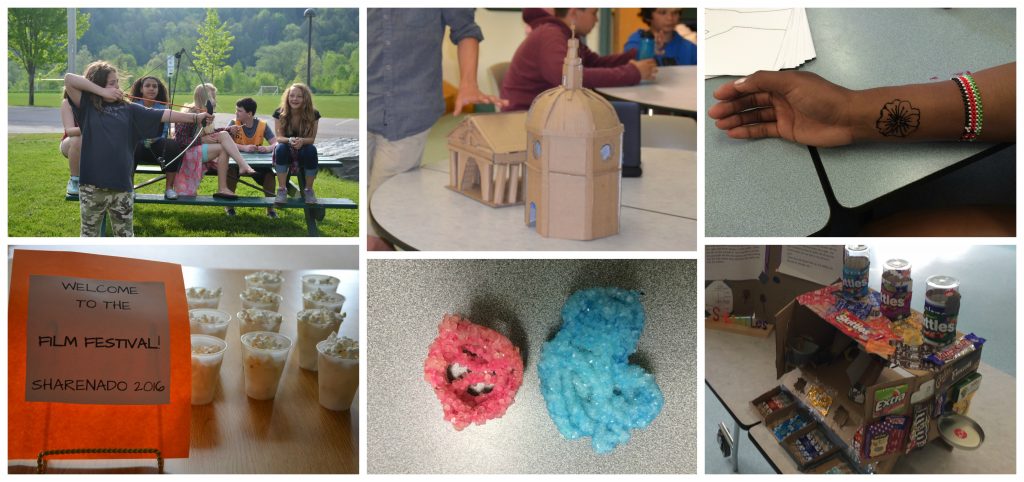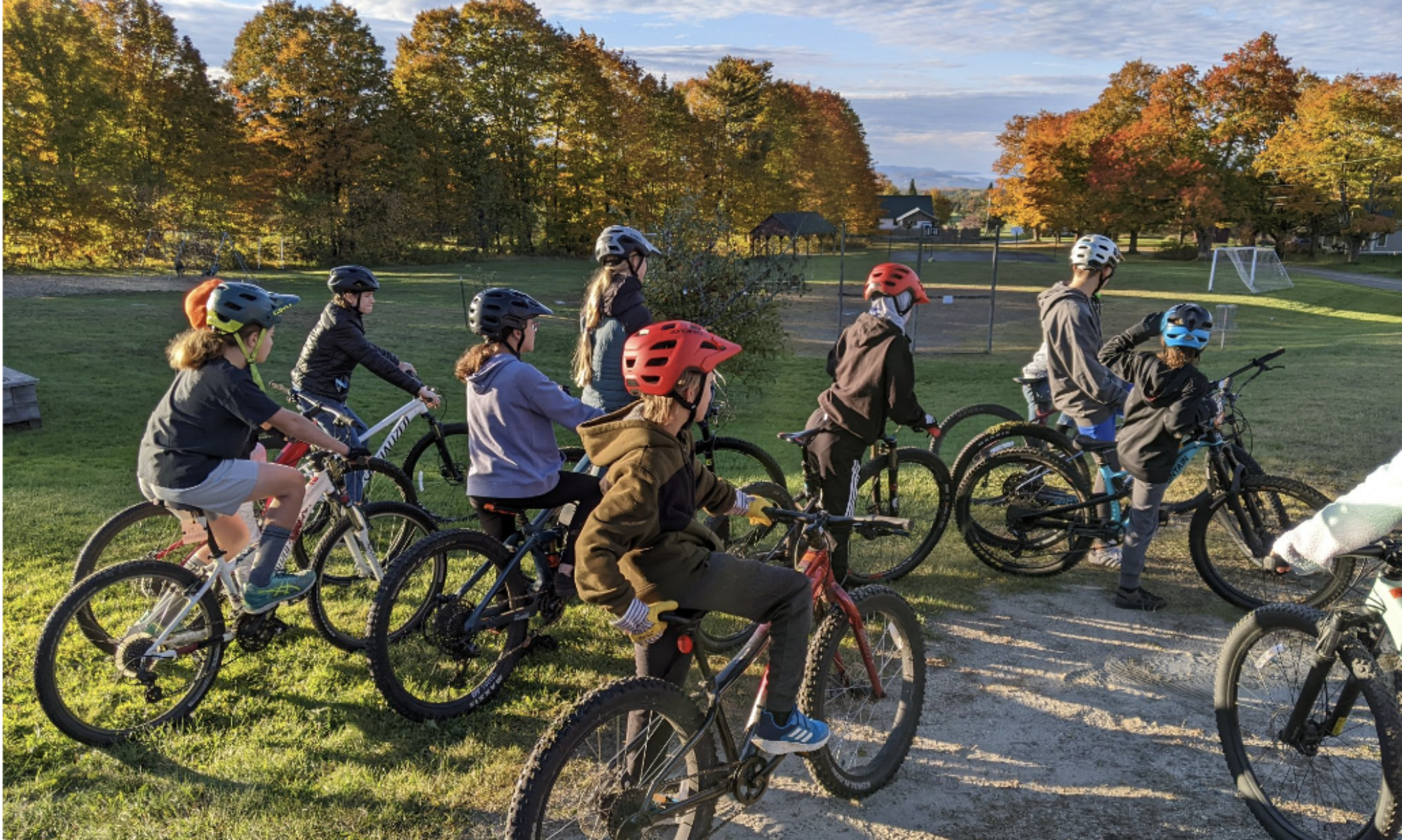An experiment in student-directed, open-ended project-based learning
 What if an entire school set out to maximize student engagement?
What if an entire school set out to maximize student engagement?
What if there were a school-wide commitment to loosening control and trusting students to do great things?
What if students were told that they could work for an hour a week on whatever they want with one simple rule: you must share something?
What do students want to learn, make and do?

Crossett Brook Middle School in Waterbury, Vermont, put this experiment into action this past spring. Here’s a sampling of what students pulled off in less than ten hours of school time:
- Engineering and building a working hoverboard
- Creating a scale model of Real Madrid’s soccer stadium
- Hatching chickens
- Investigating the throwing power of various lacrosse sticks
- “Singing” a Beyonce song using sign language
- Filming the process of training a miniature horse
- Organizing a fun run to raise funds for an annual community event
- Designing and sewing a custom made dress for a friend
- Dehydrating meals for a week long backpacking trip
How they did it
Various resources are provided throughout the account but almost all of them are available on this handy week-by-week plan.
Staff commitment
At a weekly teacher team meeting half way through the year, teachers started by considering whether a genius hour-type project would be worthwhile. We watched a “What is Genius Hour?” video and people were excited about the concept.
The leadership team (administrators and teachers) put together a basic description of objectives and picked some potential dates. Teacher teams provided feedback in another team meeting through Dotstorming and discussion.

A planning team was formed that took staff input and met regularly to develop a detailed week-by-week plan.
Teachers had ownership over the process because it was designed collaboratively and given time to unfold. It took about two months to go from the initial “do we want to do this?” meeting and roll out to students.
2. Strategic marketing
Students were involved early in the process to help build buzz around the school. The Student Council was asked to provide input. The moniker “Brainado” was born and posters were posted throughout the school to build suspense.
Every time I walked the halls I heard at least one “what the heck is Brainado” exclamation, usually to no one in particular. The suspense was building.
Students also produced a video and it was shown at an all-school assembly the day before spring break. By the time school reconvened, every student was curious and many were down right excited.

Don’t over-schoolify
The Brainado planning team took a “less is more” approach. Since we were going after student engagement first and foremost, we gave ourselves the freedom to leave things as unstructured as possible so that students’ creativity would not get bogged down.
The first session had the most structure, though the focus was to provide inspiration and spark ideas. All teachers used the same introductory Prezi (adapted from a Genius Hour intro) and then each team conducted a brainstorming session in a slightly different way.
The second session had teachers using common slides, first to describe the “Goldilocks rule” of picking projects that were the right size, and then to provide a protocol for students to share their ideas with each other. Students submitted their ideas through a Google Form that provided some useful input and encouraging feedback (100% of students reported that they were excited about the project).
As students’ projects took off, one pleasant surprise was to see so many students connecting with mentors outside of school, such as:
- Auto mechanic
- Veterinarian
- Physics professor
- Local artists
- Forensics laboratory
Teachers met before each session to collaborate and problem solve about how to support students. We were scrambling to keep up with their learning, which is a great problem to have.
Establish a rhythm
After the second session, Brainado days fell into a productive routine.
- Launch with an inspirational example, either through a video or by a student sharing their progress
- Quick share among students about what they planned to do that day
- Work time!
- Reconvene and quick share about the day’s accomplishments
Many students would leave the classroom to work with other adults in the building or in specialized spaces such as the art room, gym, or outside. They made appointments for consultations or space and the adults kept track using a shared appointment sheet.
Other students would leave the building to work with community mentors. Rides were usually arranged with parents and teachers were notified.
Celebrate and share!
The one requirement of Brainado was that each student had to share something about their project. This could be a presentation to their advisory, a discussion at home, or the bequeathing of a physical creation.
About 40% of students chose to share in the school-wide Sharenado exhibition. Sharenado included stand and deliver presentations, performances and demonstrations, activities and games, table top displays, and a film festival. It was a flurry of fun that lasted just over an hour with students sharing during either the first or the second half.
The planning group distributed student sharers between rooms (often grouping topics or genres together), and created a digital program. All students (and staff) were audience members for at least one of the two parts. Students were expected to choose a room for each half and stick with it, so that there wasn’t a lot of wandering during the sharing sessions.
The range of projects was mind-blowing and students were incredibly supportive of each other. It was like a combination of arts fest, science fair, music festival, and school carnival.

Reflect
Students blogged about their experiences and completed a self-assessment survey that was adapted from the Genius Hour Rubric for Creativity. The response was overwhelmingly positive and when asked for feedback for next year, many students said that they wanted more time to work on their projects.
Teachers also filled out a final feedback survey to provide input for future planning. They also did some thinking about the ways that Brainado contribute to a Personalized Learning Environment.
Most importantly, Brainado has become a touchstone for the entire school community as we strive to increase student engagement and deepen learning. We now have a shared experience that provides a shorthand to ask questions such as “how do we capture the energy of Brainado in our day-to-day classrooms” or “how can Personalized Learning Plans be more like Brainado?”
In this way, as a guide for future transformation, Brainado is more powerful than the most well crafted vision statements or finely detailed action plans.


5 Replies to “Brainado!”
Comments are closed.